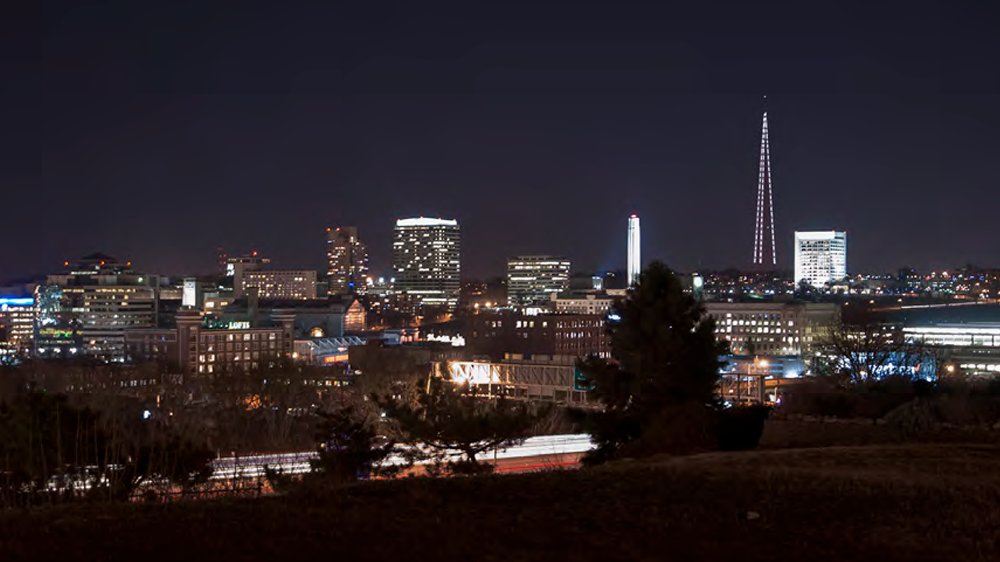
Lighting The Tower: KCAI Painting Chair Looks to the Horizon
07.19.2024
Reflecting on renewed interest in lighting the KCTV tower, Jim Woodfill - professor and chair of painting at the Kansas City Art Institute - shares a past vision for the project.
Towering above 31st Street and Grand Boulevard in Kansas City, the 1,042-foot-tall KCTV tower has been an icon of the skyline since its construction.
"Back in '78 when I was at art school here I didn't know the area as well," Jim Woodfill, now a Professor and Chair of Painting at the Kansas City Art Institute, said.
"So if I was out and was unsure where I was, I would just drive around until I could see the tower and follow it back to Midtown," he said.
A recent article in the Kansas City Star name-dropped Woodfill while mentioning a previously stalled effort to light the tower from 2018. The piece also speculated that there could be renewed momentum for a lighting project ahead of the arrival of the World Cup.
"What was dedicated as the KCMO Tower [as KCTV was known then] has peered over the city since 1956, when it debuted as the third-tallest freestanding structure in the world behind New York’s Empire State Building and the Chrysler Building — and 18 feet taller than the Eiffel Tower, which then was 1,024 feet high," according to the article.
"As a painting professor, visual artist, colorist - I think of myself in the camp of color as an adverb."
"The Eye-full Tower nickname was a natural here, particularly since it was a riff off the eye in the CBS logo," the article continued.
For much of its existence, the structure was illuminated and described as a beacon on the city's landscape. But in 2010 the tower went dark. Some 8 years later, Woodfill - along with a team - conceptualized a lighting project named "Seeing the Night Bluely."
According to the project proposal - which you can read here - the project would record sky conditions each day, capturing color across the horizon and from dawn to dusk. Each night, the tower would broadcast a record of the prior day.

Woodfill explained the title "Seeing the Night Bluely" is a reflection of how he thinks about color as an adverb.
"We don't see the yellow school bus. The school bus doesn't have the color inherent in the atomic structure of the materials. We see the school bus yellowly," Woodfill said.
"We see color as an active perceptual experience that is us acting upon our perception as opposed to something having a color whether we're looking at it or not," he said.
Woodfill also described how the lighting would present the public with a memory of daylight - perhaps allowing people to see color for what it actually is: an experience rather than a property.
In preparation for the proposal the team invited José Faus, a KCAI Lecturer in Foundations, to join - tasked with engaging the public about the potential tower plans.
But fundraising for the project stalled when an application for a $1 million public art challenge from Bloomberg Philanthropies was not selected. Then the pandemic hit in 2020 and effort went quiet.
Although the article posits an interest, there is currently no official movement on a lighting project. But Woodfill said he would still love to be involved.
"I've always wanted to do it. The tower has been an influence on my work for 45 years. If someone is going to do something, it should be me," Woodfill said.
For now, the tower is still visible during the day and - if you're close enough - you can even see it at night. Albeit, darkly.